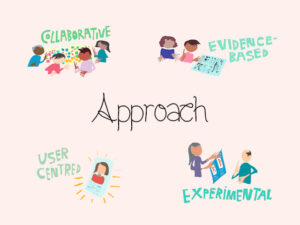A Culture Shift in the Justice System

A2JBC believes that for change to happen that improves access to justice, we need a culture shift in the justice system.
A2JBC encourages justice sector individuals and organizations to engage in access to justice action – policy changes, programs, projects - that is user-centred, collaborative, experimental and evidence-based. We call this the A2JBC Approach.
The A2JBC Approach
A2JBC has come to recognize that we need a new approach that addresses the complexity of the A2J problem. The A2JBC approach requires a shift in justice system culture in four main ways:
A Complex Problem
The A2JBC Approach reflects A2JBC’s realization that achieving improvements in access to justice will not be easy because improving access to justice is more than just a complicated justice problem for justice experts to solve: it is a complex social problem that the justice system cannot solve on its own.
The access to justice problem is caused by multiple factors. No one person or organization holds the solution. The effective solutions are not known: they must evolve by diverse people working collaboratively, trying out new ideas, measuring whether they have the intended impact and making changes if they do not.
Lawyers are good at logical thinking, but complex problems require more than just logical thinking. If logical thinking alone could have solved the access to justice problem, it would have been solved by now. Lawyers, judges and justice sector policy-makers need to work with other disciplines and sectors, both to better understand the multiple factors at play and to open up solutions that may rest in sectors other than the justice system.
Taking a user-centred perspective is itself complex because it means looking at the justice system from the holistic perspective of the users of the system. Not only does this lead to a multi-disciplinary approach, but also to engaging with users who are the “experts” in what will work for them.

